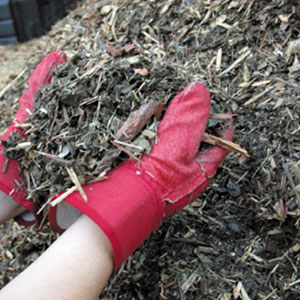


Protect and Restore Vegetated Buffers
Protect and Restore Vegetated Buffers In undisturbed natural areas, waterways and wetlands are typically protected by adjacent vegetation. Grassland, woodland and wetland plant communities naturally infiltrate and cleanse stormwater. Buffers along waterways and...
Create a Rain Garden
Create a Rain Garden A rain garden is a strategically located low area where water can soak naturally into the soil. Rain gardens can be any size or shape and are easily integrated into your overall landscape. Locate and size your rain garden appropriately....
Avoid Polluting Water Resources
Avoid Polluting Water Resources Create a biofiltration garden. One of the best ways to prevent stormwater runoff in a home landscape is to create biofiltration gardens. Also known as rain gardens or bioswales, these gardens use plants, soils, mulch and microbes to...
Use Mulch
Use Mulch When you mulch your landscape, you are imitating one of nature’s fundamental processes. Many plant communities naturally generate healthy layers of organic litter. Deciduous forests are one of nature’s champion mulchers, shedding leaves in autumn that are...
Appropriate Fertilizer Use
Appropriate Fertilizer Use The goal of applying fertilizer is to supply just enough to meet the needs of the plant. Too much fertilizer can run off into nearby waters, leach into groundwater or encourage weeds. A plant’s health should be the guide. If plants suffer...
Use Compost
Use Compost The same natural recycling that happens every day in nature is at work in a compost pile. Decomposition can take years in nature, but when you compost, you give fungi, bacteria and nature’s other decomposers everything they need to recycle much faster. A...
Support the Soil Food Web
Support the Soil Food Web The soil food web is the key to fertile soil. Plants are the producers — they use the sun’s energy to convert water and carbon dioxide into plant material via photosynthesis. The primary consumers or decomposers, mainly fungi and bacteria,...
Restore Compacted Soils
Restore Compacted Soils Healthy soil typically is more than 40 percent pore space, with large pores that promote drainage and small pores which help store water. This combination enables air and water to penetrate, promotes good drainage, and allows soil organisms to...

